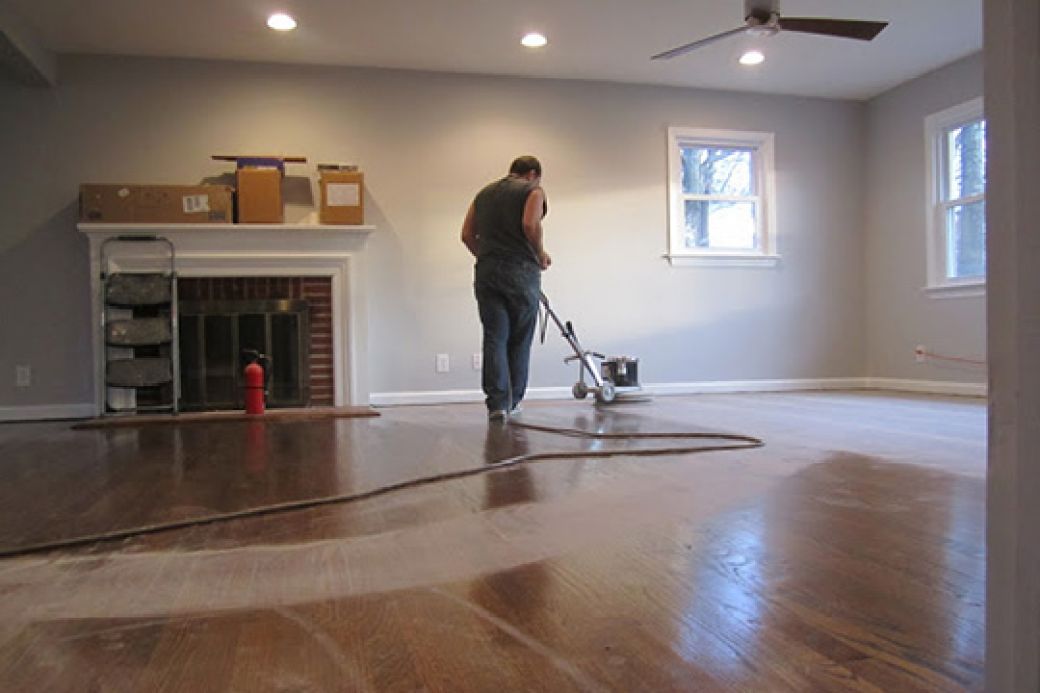Of course, refinishing hardwood floors is a DIY job. That's why all the Big Box stores rent floor sanders, right?
But just because you can rent a sander doesn't mean you should. Even if your friends did dub you "Jackie-Of-All-Trades" after that amazing bathroom re-do last spring, you still might not have the stuff it takes to refinish your floors.
Seriously, you could end up with a floor that has so many dips and grooves, you'll get more seasick than you did on that Disney cruise when you were 10. Worse, you could make a dangerous newbie mistake and start a fire. (True! We'll explain in just a bit).
Even if the cost of hiring a pro ($4 to $5 per square foot) makes you sweat, don't consider taking on the job yourself without an (ahem) honest evaluation of your own skills. (Do you really want to put your home value on the line to learn a new skill?) But if after reading this, you still decide to DIY, we've got a few tips to help you avoid a costly #fail.
How Much of a DIY Superstar Are You?
If you're a long-time DIYer, but first-time refinisher, ask yourself if you could do these two things:
#1. Push a grocery-store cart (that has a sticky wheel and a toddler in the seat) at a steady pace with no jerky movements and no stops for your entire lunch break.
#2. Paint an Impressionist masterpiece.
OK, maybe those are a bit over the top. But sanding and staining your floors is no cake walk.
A floor sander can weigh well over 100 pounds — and move like it has a mind of its own (not unlike a wobbly store buggy). Plus it'll make a ton of noise the whole time, completely getting on your nerves.
"The process is quite time-intensive, and not recommended for first-time DIYers," says Victoria Stepanov, an interior designer who's been remodeling homes for more than 15 years.
It's difficult to control the sander, and while the bare floor may look fine after you've sanded it, the flaws will come shining through once the finish is done. You could be creating hills and valleys as you go along, Stepanov says, and not even know it. But once completed, the floor will have an ugly, topographical appearance, inflicting a serious ding on your home's value.
Stepanov also very strongly advises newbies to skip oil-based stains and finishes, which require a steady hand with a paintbrush and tons of patience.
Uneven, hurried brushstrokes can leave your precious floor 16 shades of brown — not to mention the possibility of spontaneous combustion if you don't handle your oily rags correctly. That's because some oils dry through a process of oxidation — the same process that causes fires (see, it really can happen!). So oily fabrics must be sealed in a metal can with water filling the remaining space, or laid out individually to dry quickly. Never, ever pile up oily rags.
If that isn't enough to make you think twice, how about if you knew you'd have to apply two or three coats to make it worthwhile? Now you've multiplied your chances of screwing up times three.
Is Your Floor Even Refinish-able?
Double-check that your type of floor can actually be refinished. Attempting to refinish laminate floors — which aren't made of wood — could ruin them. And engineered hardwood, which has a layer of hardwood over a plywood core, isn't a much better candidate. But basically, only floors with real hardwood throughout can tolerate refinishing.
You should've been told what type of floor your home has when you bought it — either in the listing details or in the inspection report. Or you can usually figure it out by pulling up a floor register and looking at the side of a plank to see if it's all wood, laminate, or engineered wood.
Think You're Up to DIYing It? Some Tips to Help
Get a demo. Installing the belt on a sander incorrectly can ruin your floor. Ask for a demonstration of how the whole thing works when you rent it.
Test it. Pick a discrete spot to test your process before you ruin your entire living room. Some chemical- or oil-based cleaning products leave a nasty, nearly-invisible residue, which might bubble to the surface once you start to seal the planks. If anything looks odd during testing, strip your floors using a mixture of ammonia and water, or use a commercial hardwood cleaner.
"No one likes surprises," says John DeWees, owner of Denver Carpet and Flooring. "It might have been 20 years since someone used a chemical-based product, but it still got into the wood, and you don't notice until the job is complete."
Skip the stain. Keep your wood natural, then finish it with a water-based polyurethane instead.
DeWees says the water-based finish dries quickly, which is a plus. It does mean you'll need to work fast, though, he says. It can start feeling dry to the touch in as little as 15 minutes. If you don't work quickly, you risk visible overlapping strokes on the finished floor. Not a deal-breaker, but it will look amateurish.
Take your time. Refinishing your floor can take a week or more. A lot of that time will be spent, well, watching paint dry. Pros will let you know how long to stay away and help you seal up the room, but doing it yourself means you're on your own. It's best to wait at least 24 hours before touching the floor after each coat of polyurethane, even if it feels dry.
Wear socks — just socks. Shoes, bare feet, and pets can easily ruin all your hard work. So make sure to wear socks during the entire process and for the first 48 hours after the floor is done. In fact, your socks will help buff the floor! Sock race, anyone?
